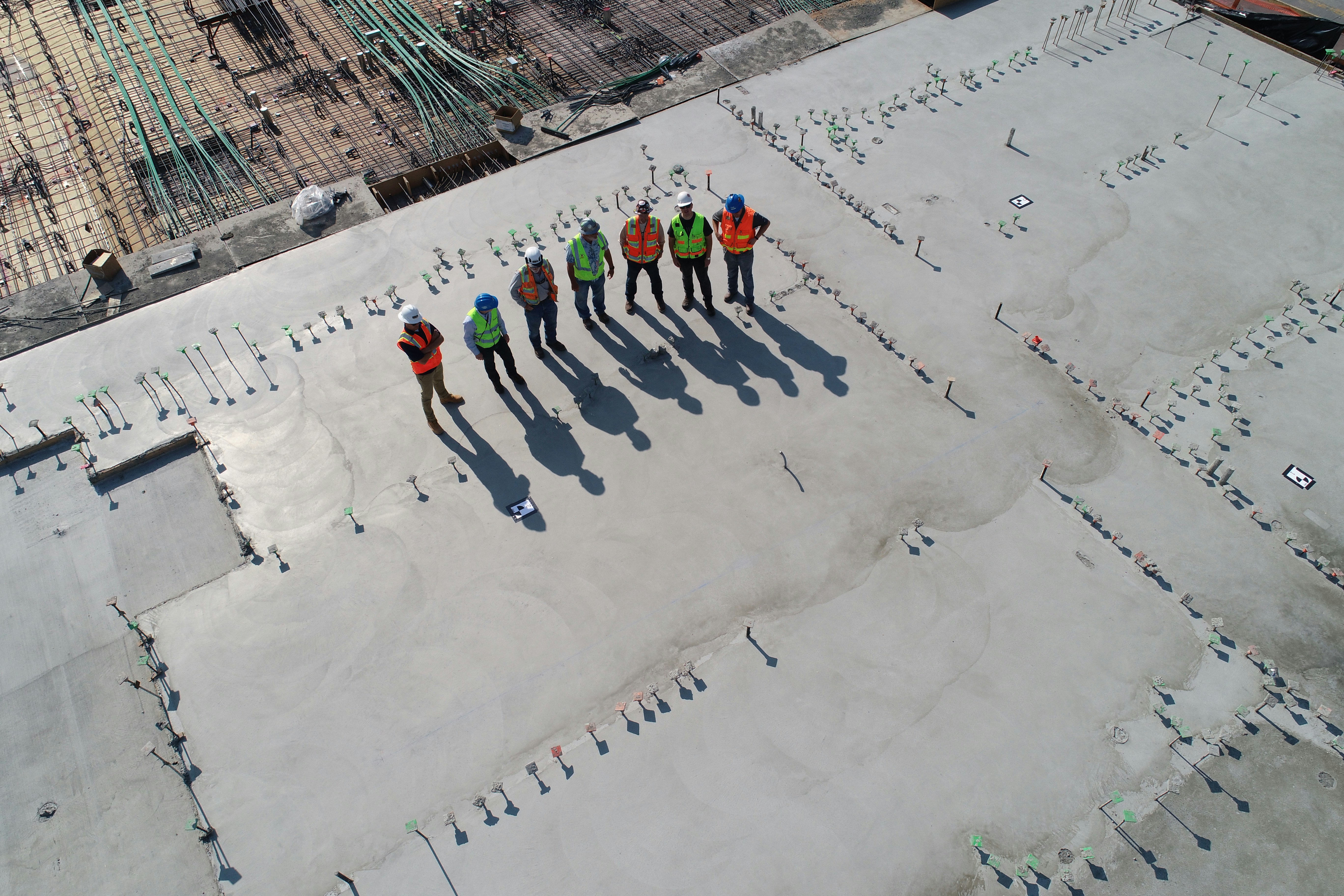The construction industry has long operated under a project-by-project mindset, with each individual build seen as a standalone effort. While this approach may work in the short term, it often leads to disjointed leadership and a lack of strategic vision. In a fast-evolving world where challenges such as skills shortages, economic uncertainty, and climate change are prevalent, can large construction firms afford to keep thinking this way; or could there be a more efficient, more effective way to grow, innovate and thrive?
To survive—and thrive—construction companies must embrace a more holistic, long-term view. By moving from a narrow project focus to strategic alignment across the entire organisation, leaders can drive efficiency, growth, and innovation. This blog will explore why the project-by-project approach is holding firms back and offer actionable steps to help business leaders in the construction industry pivot to a strategic, long-term mindset. We’ll also look at examples from major industry players who have successfully made this shift.
The shift from a project-centric to a strategy-driven mindset requires a cultural transformation that unites leadership around a clear vision. By aligning teams and focusing on long-term goals rather than simply delivering on isolated projects, construction firms can position themselves to lead the industry and meet evolving global demands. As leaders in the cultural transformation industry, at Breakthrough Global we have helped large and enterprise organisations across the world to embed a culture of alignment through culture transformation for more than 30 years. Read on to find out how to do this in your firm and learn from those who have made the transition.
Why a Project-by-Project Mindset Is Holding Firms Back
The project-based approach is deeply embedded in construction industry leadership. And with supply chain disruptions, labour challenges and cross-border hurdles to overcome, it’s clear to see why. However, according to a report by McKinsey, only 25% of construction firms operate at their full potential due to fragmented project execution and poor alignment between leadership and long-term goals. This cultural way of life fosters short-term thinking that prevents firms from adapting to bigger industry challenges, such as technological disruption, sustainability demands, and economic volatility.
In addition, Construction Digital reported that 83% of construction companies that embraced digital technologies saw productivity improvements. Yet, many firms fail to embed digital strategies at a leadership level, limiting these gains to individual projects rather than applying them across the organisation.
A project-by-project mentality also breeds silos. Different teams focus on delivering immediate outcomes, often resulting in misaligned priorities and a lack of collaboration. These fragmented efforts can lead to inefficiencies, miscommunication, and, ultimately, a lack of innovation. In contrast, construction firms with a strategic, unified vision are more agile, better equipped to adapt to market changes, and better positioned for long-term success.
The Benefits of a Holistic, Strategic View
By embracing strategic alignment, construction firms can foster a proactive, rather than reactive, approach. Long-term strategic thinking allows leaders to anticipate challenges before they arise, ensure the alignment of goals across all levels, and encourage collaboration among departments. A recent McKinsey report highlighted that firms with aligned leadership and a clear strategy were 2.5 times more likely to outperform their peers financially.
Adopting a holistic view also opens the door to better use of resources. When leaders think strategically, they can allocate investments in technology, talent, and sustainability across the entire organisation, reducing duplication and inefficiency.
For example, CEMEX has shifted its focus from isolated projects to long-term goals through its CEMEX Ventures initiative. By partnering with startups to drive innovation in sustainable construction materials, CEMEX is addressing industry-wide challenges like carbon reduction and energy efficiency—far beyond the scope of a single project. This move has shown how construction business transformation can be achieved through innovation and sustainability.
Similarly, Skanska has embedded sustainability into its long-term strategy, investing in green technologies and forming strategic partnerships to meet its ambitious net-zero targets by 2045. This move away from focusing solely on individual builds has positioned Skanska as a leader in sustainability and innovation, offering an excellent example of how strategic alignment can drive both profitability and positive environmental impact.
Actionable Steps to Achieve Strategic Alignment in the Construction Industry
For construction firms looking to shift from a project-by-project mindset to a more holistic strategy, the following steps can help foster long-term success:
- Unify Leadership Around a Clear Vision
Strategic alignment begins with leadership. CEOs and senior leaders must define a clear, long-term vision for the company and ensure that all departments are aligned with this vision. This requires regular communication, transparency, and a commitment to long-term thinking. To enhance these skills, participating in an executive training Programme can provide leaders with the tools and frameworks necessary to effectively communicate their vision and foster alignment across the organisation. - Embed Cultural Transformation
Transforming the company culture is key to sustaining strategic alignment. Leaders must instil a growth mindset across the organisation, encouraging agility, resilience, and collaboration. Investing in leadership training, particularly in digital transformation and sustainability, can ensure that construction business transformation is embedded at all levels. - Adopt Digital and Sustainable Strategies
Embracing digital tools and sustainable practices should be integral to a firm’s strategic plan. Companies like Skanska and CEMEX have already seen the benefits of using technology to reduce costs, streamline operations, and meet sustainability targets. Digitalisation allows firms to track progress, identify bottlenecks, and optimise resources more effectively across multiple projects. - Focus on Long-Term Goals Rather Than Short-Term Gains
While project deliverables are important, they should be framed within the context of the organisation’s long-term vision. Leaders should develop objectives and key results (OKRs) that measure success not just at the project level but across the entire organisation, ensuring that every project contributes to broader strategic goals.
Conclusion
The construction industry is facing unprecedented challenges, but firms that embrace strategic and leadership alignment and move beyond a project-by-project mindset will be the ones that thrive in the long term. By uniting leadership, embedding cultural transformation, and investing in digital and sustainable strategies, construction companies can position themselves to lead the industry and achieve lasting success.
Get in touch to find out more about how Breakthrough Global’s tried and trusted Breakthrough Tools© practices and methodologies, and our Transformational Program Services could help you. We offer tailored Transformational Programmes for all levels of your global organisation, from Wave 1 Executive Intensives to Wave 2 for Business Unit transformation, and Wave 3 Critical Mass transformations.

%20(8).png?width=1200&length=1200&name=Green%20Flag%20(1920%20x%201080%20px)%20(8).png)




-2.png)